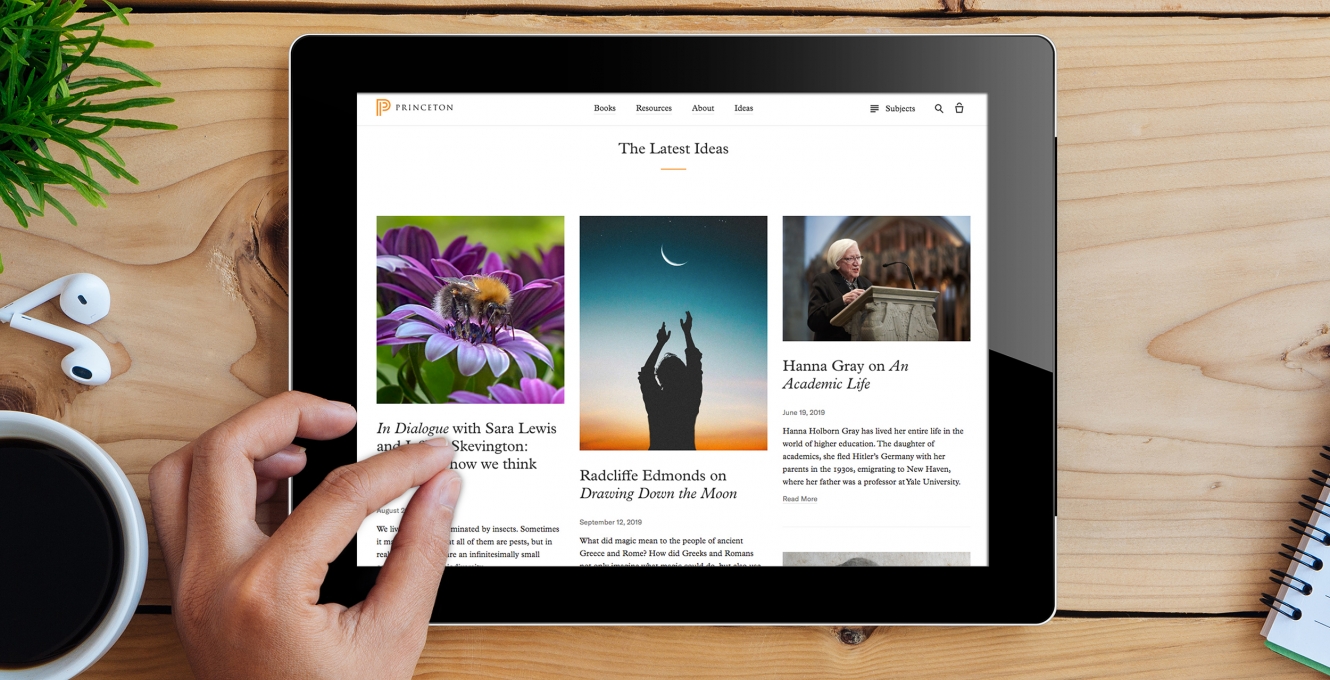In every book there is a story. For Princeton University Press, those stories might be about the magic of mushrooms, or the global struggle for human rights, or a narrative about narrative economics. There is a through line to each of the stories told in PUP books, one that includes peer review and the generous collaboration of our editorial board. But there is also a meta story that exists in each smyth sewn binding, or that emanates from each line of narration in our newly launched audio books program. That larger story is about the unique publishing collaborations that shape books as much as their bindings and their adaptive fonts. The publishing narrative, from a reader’s perspective, is a quieter story, sometimes even a silent one. But as we publishers increasingly encounter a climate of uncertainty—economic, political, intellectual—this is a story we want to amplify, with a goal of knowledge sharing. This goal we share with our beloved PUP authors, and it anchors our mission.
Ours is a story of partnerships and collaboration, from the formative and long-term partnership we enjoy with Princeton University, to the partnerships that guide the way words and sentences unfold on every page we publish. The P in our logo has a multiplicity of meanings: partnerships, and, as a non-profit, mission-driven organization, a philanthropic spirit also runs like a rhizome through this press. A quest for perfection is another pillar of that P. Each book entails an alchemy of collaboration. These collaborations are influenced by years of expertise, and touched by hearts and minds of the acquisitions department, the editorial board, the intellectual property team, production editors and manufacturing teams that ensure every compelling book form, designers in the Creative Media Lab, marketing magicians from publicity to copywriting, metadata managers in publishing operations, indefatigable sales representatives, intrepid global travelers on our rights team, and, of tantamount importance, the partnerships we enjoy with readers and listeners. All these actors hold integral roles in our global publishing story and ensure the illumination and projection of the intellectual endeavors of our authors.
In creating a new website, we aspired to share, in a novel way, the entire story of PUP publishing with the world—with readers, with existing and prospective authors, with librarians, media, faculty who are interested in teaching with PUP course and textbooks, and our many other partners. We also wanted to share ideas, as part of an ongoing conversation with all of you. Ideas are core to our mission, and the iteration of ideas into enduring and influential books is in our daily practice, and passion. The website is our equivalent of a book, or ePub file, as it is a vital way to share our unique character, our knowledge, and our impact.
Just as manuscripts need the symbiotic collaboration with publishers to realize aspirations, so too do we as publishers need partnerships to tell our stories. We are incredibly fortunate to have our website story, and new chapter in our historic narrative, guided by the creative expertise of AREA 17. They have taken the proverbial blank digital page and animated it with an elegance that surpassed our expectations. Working with an outstanding committee of PUP staff, the AREA 17 website collaboration embraced the ethos of peer review that guides our publishing and paired that with a creativity analogous to that which makes a cover design beguiling, or endpapers an unexpected delight.
The design of the site emphasizes our identity—global, collaborative, and evolving in response to a dynamic world. The Ideas section shares knowledge in a new form, and centers ideas in our web narrative. Our subject pages project editorial ambitions that provide the narrative arc of the entire press. The journey to the global offices on our information pages includes a view of the temporal worlds in which we collaborate, with clocks set to each time zone. And just as readers of our books might encounter design elements of surprise and beauty, in a font or a perfectly selected endpaper, so too can visitors to our site discover the unexpected, from the total numbers of books that calculate on the book and subject pages, to a glimpse inside the world of bookmaking. Within an entirely contemporary medium, we have also found ways to signal the profound meaning of history, just as the very best of scholarly writing does in deploying footnotes. The display font used throughout the site is Plantin, named after a 16th century printer; the architect of our Princeton building took design inspiration from the Plantin Museum in Belgium.
And as books themselves have iterated in form to embrace new technologies, from digital to audio, AREA 17 has engaged innovative technology and web design tools throughout the website to impact the way visitors experience the content. As one scrolls through books, for example, notice the lift of a cover with the hover, which evokes the excitement of lifting a book from the front table of a favored independent bookstore. And the dynamic calendar guides site visitors to opportunities to visit some of those stores and meet authors. The staff list on the new site includes our entire team, and if our own publishing narrative had its “keywords” that are now so crucial to book metadata, each name on this team list is weighted as an essential word, and role, in our unique book of publishing.
We are grateful for the experience this website endeavor has contributed to our knowledge, and for the exquisite partnerships that create and convey our story. We hope each visitor to the new site will find it as enjoyable and illuminating as time spent in the pages of PUP books.
